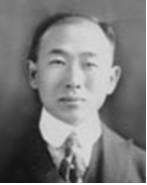He was responsible for supporting court cases, securing funding, and negotiating with lawyers, raising awareness in the American media about Japan’s aggressive intentions and the inevitability of Korea’s independence. In 1913, he served as one of the representatives from the eight provinces at the founding conference of the Heungsadan in San Francisco, where he held the positions of treasurer and director. He also worked hard to support the family of Dosan during his public activities, being one of the key figures who provided him with strength.
In 1919, as the treasurer of the Korean National Association, he secured funds for the establishment of the provisional government. In 1917, he organized the North American Industrial Company with An Chang-ho, raising $95,000 in stock to generate military funds through rice farming, but the venture failed and closed in 1927.
As the treasurer of the Korean National Association in 1919, he worked diligently to secure funds for the independence movement and the provisional government, dedicating himself to the construction committee that established the main hall in 1938. In 1941, he became an executive member of the United Korean Association, which unified all organizations in the U.S., promoting support for the provisional government and engaging in diplomatic and propaganda efforts. In 1944, he served as a diplomatic committee member for the Provisional Government’s U.S. diplomatic mission, and in 1945, after Korea’s liberation, he became the treasurer of the Korean National Association’s domestic delegation, finally setting foot on his homeland after 40 years. He passed away in 1956 due to illness. His descendants established the U-Gang Scholarship Foundation in his honor. The government posthumously awarded him the Order of Independence in 1995.

Leave a Reply